
7 minute read
HORSE BREED: THE HANOVERIAN HORSE
HORSE BREED
The Hanoverian Horse
The Hanoverian has proved itself as the ultimate performance horse for well over a century, writes DANNII CUNNANE.
The Hanoverian is an incredibly popular warmblood breed throughout the world, well known for its athletic and sporting prowess in the main Olympic disciplines. Whether it’s their expressive paces in dressage or their immense power in showjumping, the Hanoverian has also influenced many other horse breeds throughout the centuries to pass on its wonderful qualities.
Hanoverian horses can be traced back into the 16th century and hold the longest traceable genetic lineage in the equine world. This beed of horse was purposely bred and raised for agricultural and military purposes because of their great strength and endurance.
Breed origins
The Hanoverian lines stemmed from three influential stallions - The Byerley Turk, the Darley Arabian and the GoDolphin Barb. These stallions were of high quality and were put over the heavier German mares to produce horses suitable for agriculture, harness and cavalry.
In 1735, George II, King of England and Elector of Hanover, founded the State Stud at Celle in Germany with the purpose of making highquality stallions available to local breeders. This stud was also important as it launched the central registration of breeding and foals.
At the beginning of the 19th century thoroughbred and English halfbred stallions were increasingly used to refine the breed, and in 1844, a German law was passed that allowed only stallions that were passed by the inspection commission to be used for breeding purposes.
This prompted the formation of a specific Hanoverian breed society in 1867 whose aim was to continue to produce exceptional coach and military horses. This society continued until 1922, when the Society of Hanoverian Warmblood Breeders was founded, which privatised ownership of the studbook.
A change in breeding direction
After World War I, the breed began to decline. Armies were no longer looking for calvary horses, they were forging ahead with motorised vehicles. Modern machines also started making their way onto farms, so agricultural work with horses was beginning to become redundant.
These reasons caused the focus of the breeding of these beautiful horses
The majestic Remi Vigneron has good reason to stand proud – he’s the first Australian bred Hanoverian stallion to be licensed by the Hanoverian Verband. He was also given the Champion Hanoverian award at the end of the German judges tour to Australia, and was the first stallion to win that award.
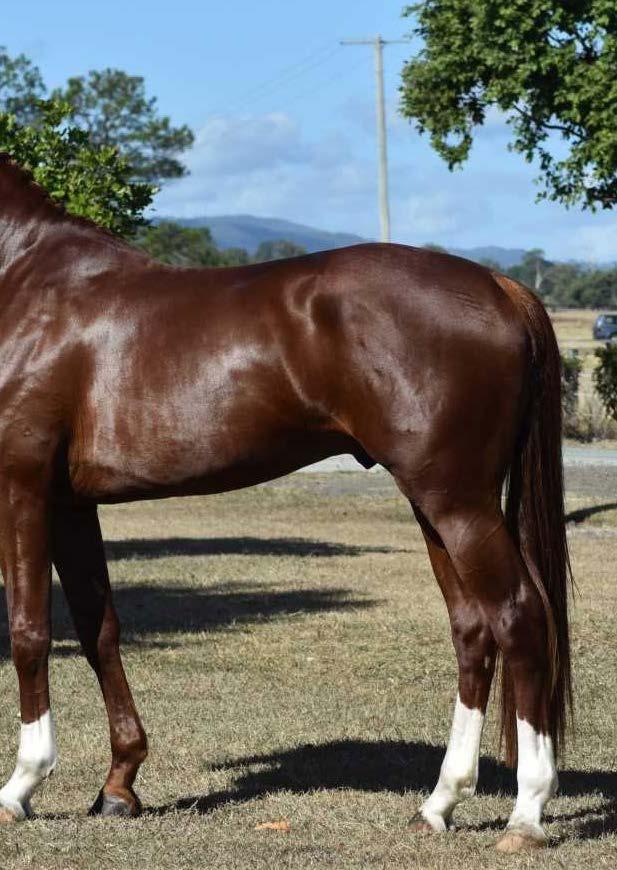
A
B
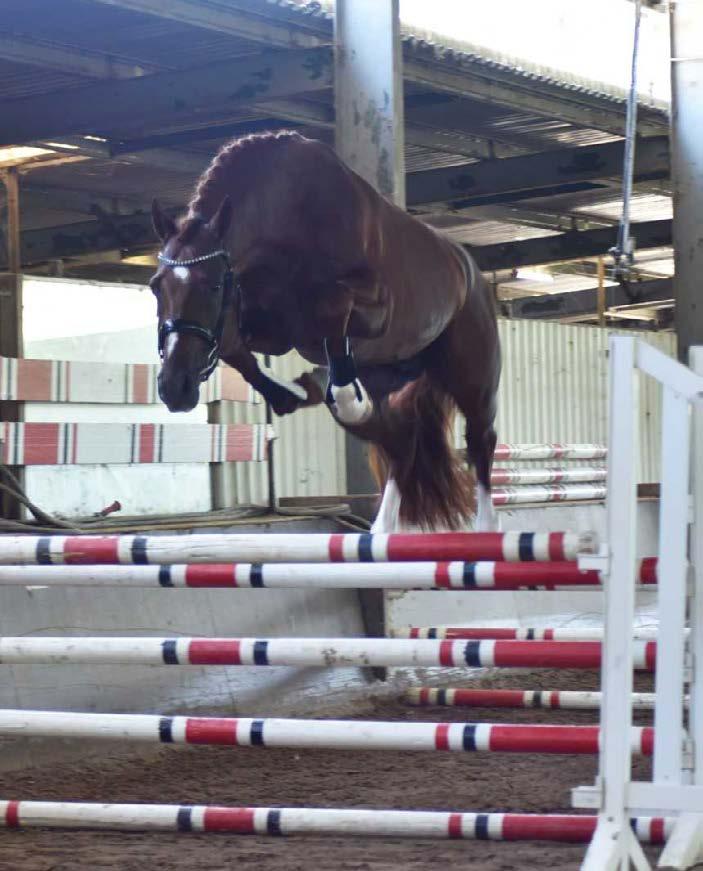
A: Remi Vigneron undertaking the freejump part of the licensing assessment.

B: A Hanoverian Classification day during the Hanoverian Verband’s fourweek assessment tour in Australia. to shift to riding, creating a modern riding horse that was both strong, yet comfortable to ride. Further refinement of the genetic pool progressively produced the modern Hanoverian horse that is recognised today.
After World War II, the breed was refined with both Trakehner and Thoroughbred horses to produce the elite sporthorses we admire so much. The goal was reached to breed an elegant horse with a trainable temperament, a strong back and athletic movement. Colour was not of great importance, but the modern Hanoverian does not include palomino or buckskin.
The breeding produced an athletic horse which is well known and highly sought after in all Olympic disciplines. Breed characteristics
Hanoverians are elegant, strong, and robust horses. They are bred to be willing and trainable, and have a powerful body, athletic movement, and strong limbs.
Most are chestnut, bay, black and grey and regulations prohibit horses with too much white. Buckskin, palomino and cremello horses are not allowed to be officially registered.
These incredible horses can stand between 15.3 – 17.2 hands high, however, most are commonly in the range of 16–16.2 hands. Breeding stock evaluation
In Germany, stallions and mares must pass rigorous testing if they are to be accepted into the stud book, so excellent health is a must.
Every year Hannoverian testing takes place in almost every country to document and recognise the best that are presented at each event. Stallions
Each year, the regional clubs in Germany nominate a total of 700 twoyear-old colts as stallion candidates, of which only 100 attend the actual
C

E
licensing in October.
A panel of judges, experts in their fields, form the lisencing commission, evaluate each young stallion for his suitability as a sire of future Hanoverians. The evaluation runs over three days.
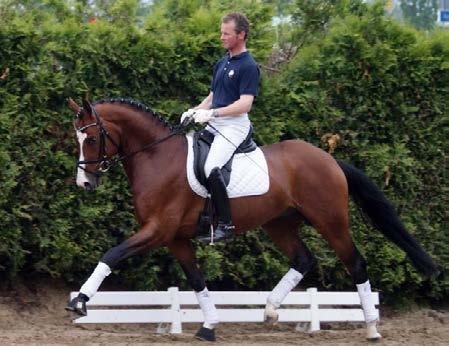
Prior to pre-licensing there is a veterinary exam, where the colts must be deemed free of osteochondrosis lesions, vices and other heritable conditions. The colts are then assessed on bitumen to ensure that they have sound, straight, true gaits, as well as straight, sound legs.
If the horses pass the pre-license and vet exam they are then judged on the suitability of their gaits for dressage, and their competency in jumping.
At the end of the process about half of the young stallions will have earned their temporary breeding license, while the other half are typically gelded and go on to lives as riding horses.
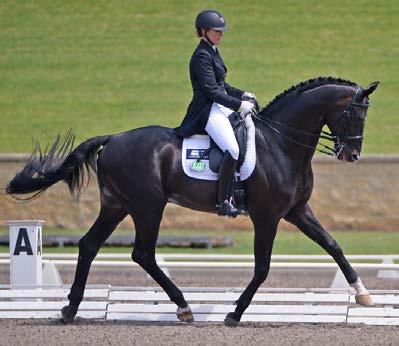
Following these three days, there is a stallion sale which announces all the new licensed stallions for that year.
D
C: Antique Print of the Hanoverian horse by O. Eerelman, 1898. D: Fiderfurst by Fidertanz imported to Australia, goes back to the Godolphin Barb.
E: The popular stallion Stedinger, who was imported to Australia, goes back to the Darley Arabian.
Mares
The Hanoverian Verband also organises the one-day test for mares which are carried out over the four weeks of the assessment tour.
These tests are a more in-depth evaluation of a mare’s suitability
F
The following horses can be traced back to the founding fathers’ lines.
for riding. In addition to her talents for dressage or show jumping, the judges fully assess her character and temperament, including how easy she is to train.
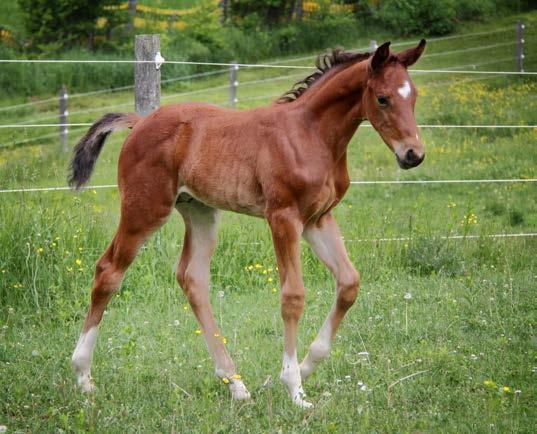
These tests are held at the Hanoverian Riding and Driving School in Verden and at the Hessen State Stud in Dillenburg. Mare and foal shows
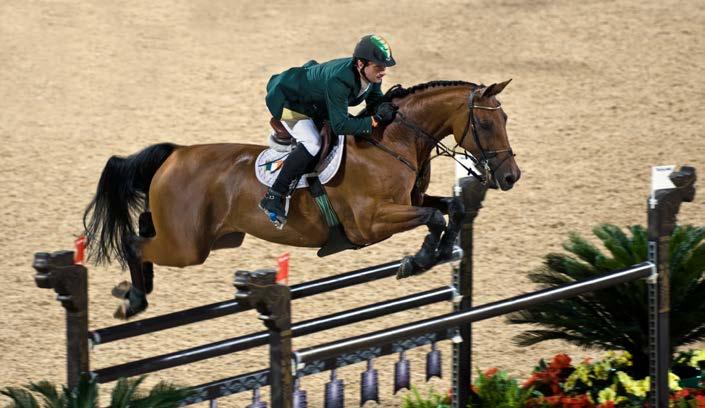
The district German clubs are primarily responsible for local mare and foal shows. This is an elite opportunity where foals born within that year are presented, usually at their dam’s side, to a panel of licensed breed judges.
Foals of acceptable quality are branded, their papers are signed, and they are entered into the foal registry. Judges also use this venue to recommend exceptional foals for stallion candidacy or auction participation.
Filly foals return to the mare shows as three-year-olds to be evaluated for entry into the studbook; as only such mares can have registered Hanoverian foals. The young mares are evaluated on their conformation and gaits to ensure that they are of sufficient quality.
G
F: Olympic Equestrian Jumping in Hong Kong. Lantinus (1998 bay gelding by Landkönig) and rider Denis Lynch. G: A Hanoverian foal showing all the classic attributes of the breed.
Further information
Not only is the Hanoverian a beautiful horse, it is extremely popular in Australia. They are highly sought after throughout professional riding circles for their elite performance abilities, and also make amazing schoolmasters for up and coming new riders.
For more information about the breed, visit the Hanoverian Horse Society of Australia website.
From The Byerley Turk line: Brentano II by Bolero Belissimo M by Beltain
(formerly ridden by Hayley Beresford) Rotspon by Rubinstein I
From the Darley Arabian line: Quando-Quando by Quattro B
(imported to Australia)
Stedinger by Sandro Hit
(imported to Australia)
Showdown by Sandro Hit
(imported to Australia)
Lauries As by Londonderry
( imported to Australia)
Stakkato by Spartan
(show jumper ridden by Eva Bitter)
Don Johnson FRH by Don Frederico
(ridden by Isabell Werth)
De Niro by Donnerhall
(international Grand Prix success)
El Paso by Escudo I
(ridden by Marcus Beerbaum)
Escada FRH by Embassy I
(ridden by Ingrid Klimke)
Salinero by Salieri
(ridden by Anky van Grunsven)
From the Godolphin Barb line: Florestan I by Fidelio Fidertanz by Fidermark I Fiderfürst by Fidertanz
(imported to Australia)
For Pleasure
(Showjumper ridden by Marcus Ehning)
Weltmeyer by World Cup I Wolkenstein II by Weltmeyer Warum Nicht FRH by Weltmeyer
(ridden by Isabell Werth)
Prince Noir by Prince Thatch xx
(imported to Australia)
Fishermans Friend by Fabriano
(imported to Australia/dec)










